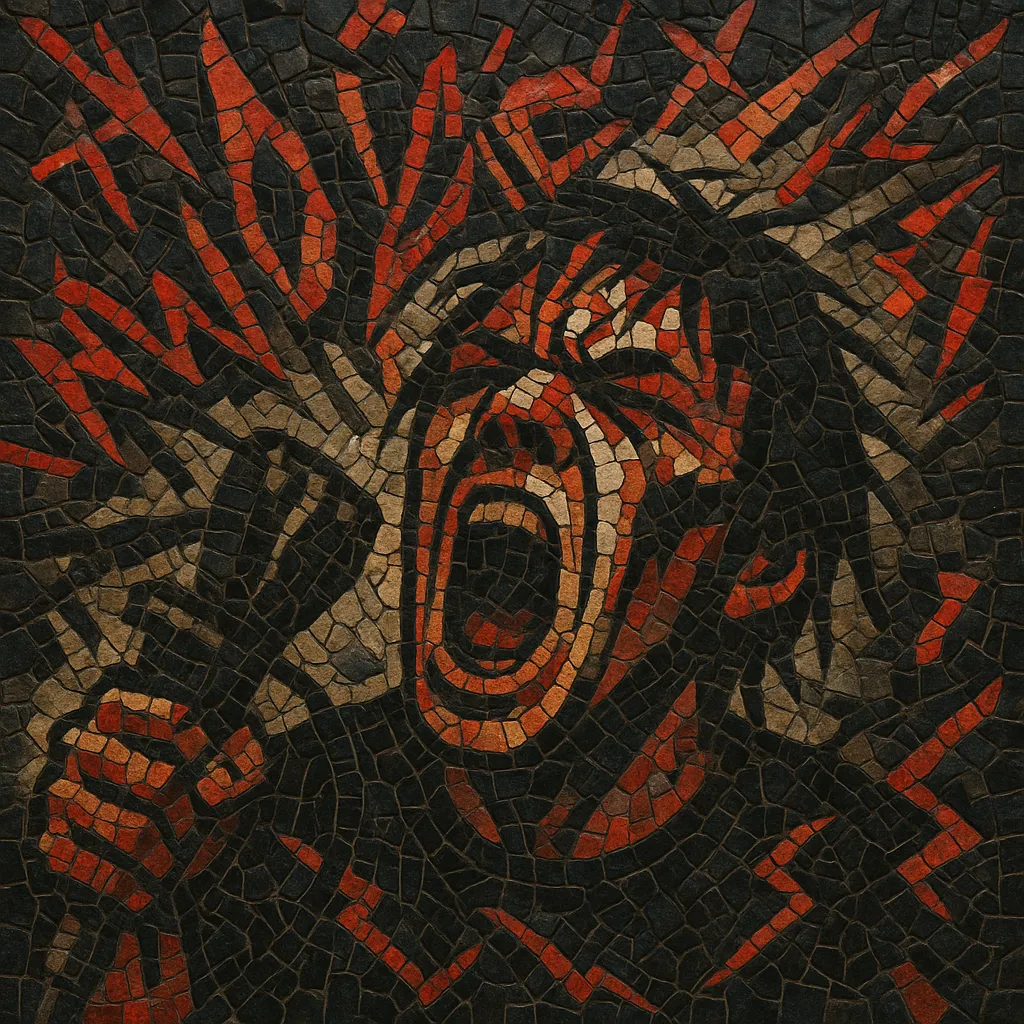
Noisecore is an ultra-chaotic, noise-saturated offshoot of hardcore punk and grindcore that pushes extremity to its limit.
It favors split-second song structures, explosive blast beats, feedback squall, and improvisation over melody, harmony, or traditional arrangement.
Releases often contain dozens or even hundreds of micro-tracks, recorded lo‑fi on cassette or 4‑track, emphasizing raw immediacy, distortion, and overload.
Vocals are typically screamed, barked, or reduced to texture; guitars and bass are mangled through high-gain pedals and feedback loops to form a nearly continuous wall of noise.
Noisecore emerged in the underground as a collision of hardcore punk’s speed and attitude, grindcore’s brevity and extremity, and the textural abrasion of noise and power electronics. Early exemplars like 7 Minutes of Nausea (Australia), Sore Throat (UK), The Gerogerigegege (Japan), and Anal Cunt (USA) stripped songs to impulsive bursts—often improvised—favoring distortion, feedback, and blast beats over conventional structure.
During the 1990s, the style proliferated through international tape-trading networks, zines, and microlabels. Projects such as Deche-Charge (Canada), Meat Shits (USA), and Gore Beyond Necropsy (Japan) defined aesthetics of extreme lo‑fi recording, microscopic track lengths, and transgressive humor. The genre’s DIY ethos and cheap recording setups encouraged a worldwide, highly prolific cottage industry of splits, compilations, and rehearsal-room sessions.
With CD‑R culture, netlabels, and later Bandcamp/streaming, noisecore became even more decentralized and hyper-productive. Newer acts (e.g., Sete Star Sept, Gorgonized Dorks, Suppression) blended noise and grind with improvisation, live-on-the-floor tracking, and maximal clipping. While remaining niche, noisecore has influenced adjacent extremes—cybergrind, gorenoise, and certain noise-metal hybrids—by normalizing saturation, anti-structure, and volume-as-composition.
Noisecore’s core principles are immediacy, overload, and irreverence. Performances often prioritize one-take spontaneity; fidelity is secondary to impact. Artwork and titles can be provocative or absurd, but the through line is an aggressive rejection of polish and musical hierarchy.
Use a basic punk/grind setup: drums (fast, loud), guitar and bass (high-gain distortion), and a vocal mic. Add noise sources: feedback loops, contact mics, cheap cassette players, and harsh pedals (fuzz, distortion, ring mod, delay).
Prioritize speed and brevity: blast beats, d‑beats, and frantic fills. Write micro-songs from 1–20 seconds, often recorded live in batches. Embrace abrupt start/stop cuts, hard mutes, and immediate transitions without verses or choruses.
Treat pitch as texture. Use detuned power chords, chromatic rakes, pick scrapes, and atonal clusters. Push amps and pedals into clipping; layer feedback for a continuous noise floor. EQ is minimal—let the midrange aggression dominate.
Screams, yelps, grunts, and spoken bursts function as percussive noise. Lyrics can be absurdist, confrontational, or purely phonetic. Keep takes raw and single-pass; heavy mic proximity and saturation reinforce the texture.
Track live in one room to capture bleed and chaos. Record to cassette/4‑track or emulate with digital saturation, high input gain, and minimal editing. Avoid noise gates or heavy cleanup—let the hiss and clipping become part of the composition. Sequence dozens of short tracks with minimal gaps to maintain momentum.

